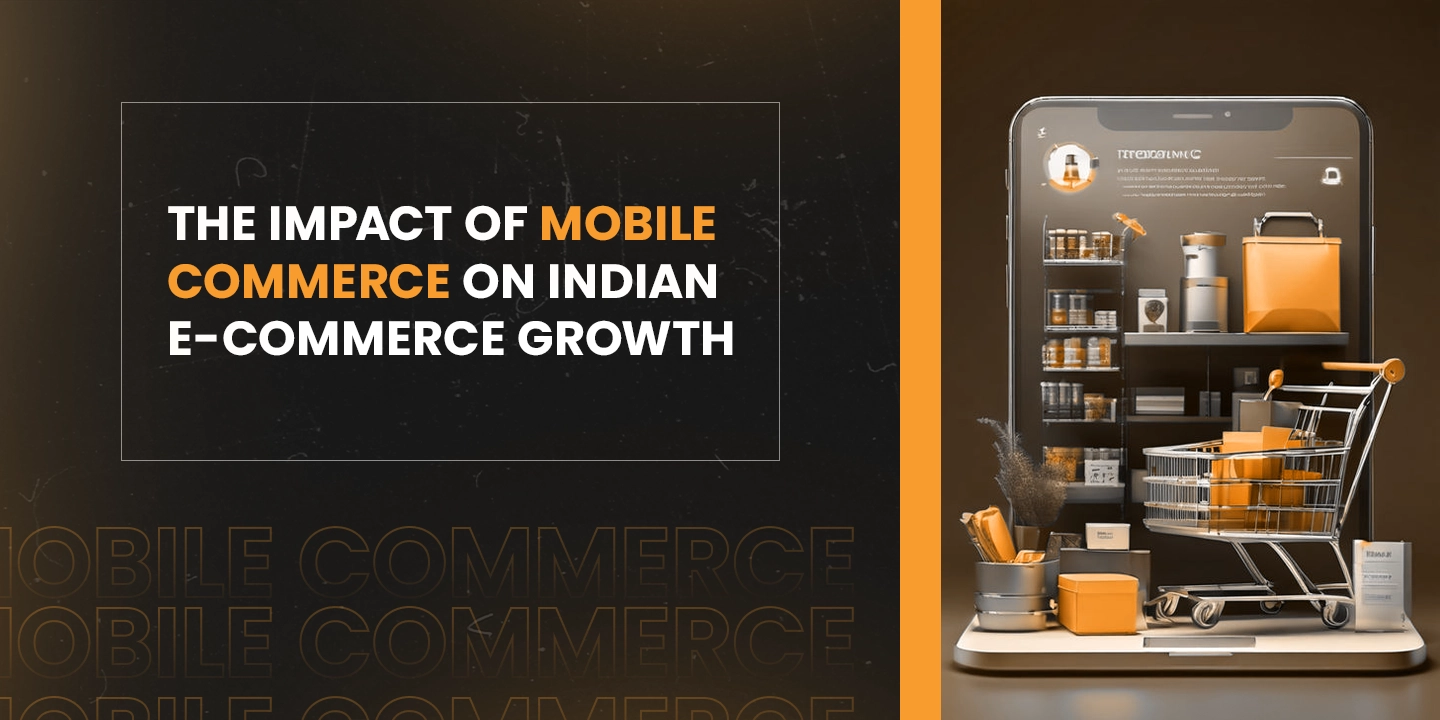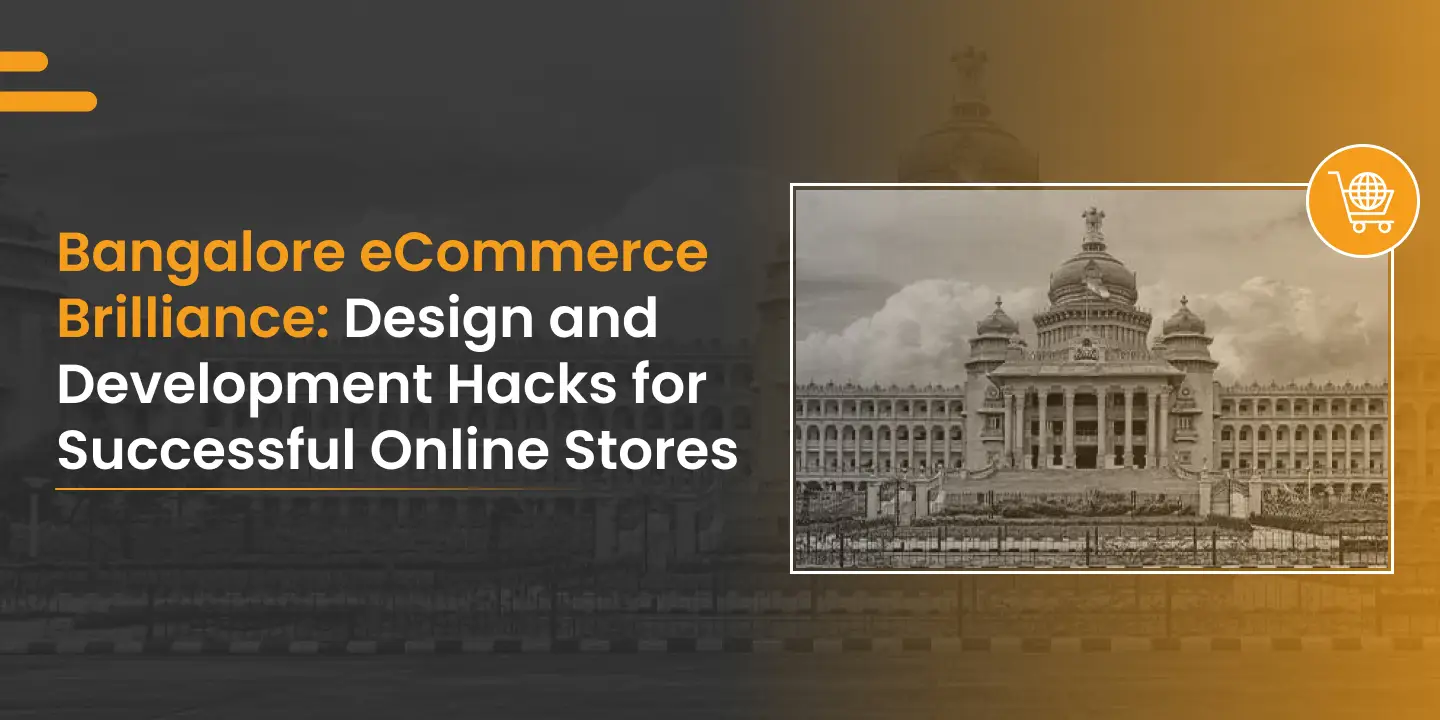It’s estimated that 70% of online purchases are made via mobile devices. This demonstrates the increasing significance of mobile commerce and its effectiveness in providing your company with a competitive edge.
According to Statista, 60% of worldwide e-commerce income is expected to come from mobile e-commerce in 2023, with sales expected to reach 2.2 trillion dollars. Additionally, the report projects that by 2027, mobile commerce will make up 62% of the entire e-commerce market, up from 56% in 2018.
Mobile shopping is the way of the future. How might the growth of m-commerce help your company? This article will address all of your questions.
What is mCommerce or Mobile Commerce?
Mobile commerce, sometimes called mCommerce or mobile eCommerce, is the practice of conducting online transactions through a mobile device—typically a tablet or smartphone. It’s a development in eCommerce that lets customers purchase goods and services without being limited to large desktop computers.
Forbes divides the procedure into mobile payments, banking, and shopping. With the increasing number of people using mobile devices, offering a smooth shopping experience across all platforms is essential. When it comes to developing mobile eCommerce solutions, many businesses turn to eCommerce website developers in India for their expertise and cost-effective services.
The M-commerce Impact on E-commerce Growth
1. Enhanced Availability
Indian shoppers now find it simpler to access online purchasing platforms because of mobile commerce. Thanks to the widespread availability of smartphones and reasonably priced mobile data plans; more individuals can now shop online; expanding the client base for e-commerce businesses, including those supported by eCommerce website developers India.
2. Rise of Mobile-First Strategies
Indian e-commerce businesses are now more focused on developing mobile first strategies and mobile-friendly websites and applications. Better user experiences and higher levels of engagement have resulted in increased conversion rates and sales.
3. Modifying the Attitude of Consumers
Mobile commerce has altered India’s customer shopping habits. People are moving away from traditional brick-and-mortar establishments and prefer to explore and shop online using their smartphones. As a result of this shift in customer behaviour, the nation’s e-commerce industry has increased.
4. Increased Market Visibility
Due to limited access to traditional retail establishments, e-commerce enterprises may now reach customers in remote and rural India; thanks to mobile commerce. This has helped to expand the e-commerce industry overall and created new market prospects.
5. Innovative Payments
Payment technologies like UPI; mobile wallets, and other digital payment solutions are a result of mobile commerce. These payment alternatives have increased the convenience and security of online shopping; contributing to the expansion of e-commerce in India.
6. Ecosystem Development
Technology solutions; digital marketing, logistics, and other supporting services have all grown in strength due to the expansion of mobile commerce. This ecosystem; which offers the infrastructure required for online firms to prosper, has contributed to the expansion of e-commerce in India.
7. Encouragement for Small Businesses
Thanks to mobile commerce, small and medium-sized enterprises in India now have a platform to compete with larger firms and reach a wider audience. Small businesses may now put their products on platforms like Flipkart, Amazon, as well as others and reach buyers nationwide.
8. New Business Model Emergence
Mobile commerce has emerged with new business models; including hyperlocal delivery services and social commerce. These models use mobile technology to provide distinctive shopping experiences; propelling the e-commerce industry’s continued expansion.
Benefits of Mobile Commerce
1. Improved e-commerce encounters
eCommerce made purchasing easier for most people by eliminating the need to visit businesses for small physical purchases and enabling online shopping for everything. However, in a time when social media presence is crucial for most people, these same customers are spending a lot of time online via mobile devices, highlighting the importance of partnering with an eCommerce development company in India that understands these trends.
The following are some advantages of utilising mCommerce:
- Mobility: You can always access mobile devices. Consumers will likely always have their smartphones with them, regardless of where or what they are doing. This may only sometimes be the case with desktop and laptop computers.
- Reachability: Using SMS, chat apps, or even web push notifications, mobile commerce also makes it possible to communicate with customers in a more “instant” manner.
- Location-tracking: Mobile commerce allows businesses to follow their customers’ whereabouts using GPS and WiFi. This will enable them to customise customer purchasing experiences based on their locations and other demographics.
2. Consistency in the expansion of businesses
Online shopping is not new. Your customers already use mobile devices for business transactions and interactions with businesses. The expansion of mobile commerce is unstoppable due to the popularity of mobile apps and the requirement to maintain agility.
Statista predicts that mCommerce sales will surpass 10% of all retail sales by 2025. Because of the expansion of the mobile user base and technical developments, this number is anticipated to rise.
3. Experiences with omnichannel shopping
Omnichannel marketing is the ability to sell in person and online by creating a presence across several channels. Mobile devices have become an essential part of our daily lives and a vital channel for businesses to engage with.
Modifying your business to accommodate both mCommerce and eCommerce can give your clients a genuinely seamless shopping experience and make it easier for them to interact with and make purchases from you, positioning you as a leading eCommerce company in India.
4. Payment simplicity
When was the last time you split a bill or made a purchase and recommended using a mobile wallet to make the payment? The use of mobile wallets such as Apple Pay, PayPal, Google Pay, UPI, and PayTm is clearly growing quickly.
With eCommerce, you may allow customers to purchase online with just one click by accepting payments through these mobile wallets. With product discovery and payment convenience, online retailers’ conversion rates will inevitably rise!
The rapid rise of m-commerce in India?
1. Huge User Base That Will Keep Growing
As of January 2021, over 624 million Indians were online. A new IAMAI-Kantar Cube research project estimates that by 2025; there will be 900 million. Most users favour smartphones over desktop and laptop PCs for internet access.
Remarkably, the survey suggests that by 2025; there may be more internet users in rural regions than in urban ones. The number of people utilising mobile commerce will increase along with the expansion in mobile internet usage. Developing an m-commerce platform now can help a company expand, particularly into the unexplored rural market.
2. Quicker Purchase Process
Although creating a flexible online e-commerce infrastructure is crucial; websites typically cannot match the pace of mobile applications. Applications save data locally on mobile devices to speed up retrieval; unlike webpages that rely on web servers.
Therefore; customers can peruse merchandise and make purchases more quickly on mobile devices. M-commerce is unquestionably a solution worth considering if the goal is to simplify the purchasing process and provide a better shopping experience, especially when partnered with an eCommerce company in India for tailored solutions.
3. Targeting Done Right
Reaching the target audience with the appropriate message at the right moment is essential to any modern digital marketing plan. Applications for mobile commerce can make a big difference in this area. Brands may target consumers at certain moments by utilising geo tracking and programmatic advertising.
For example; someone using the mobile shopping app could receive a personalised promotion during a lunch break. It’s also possible to send customised, personalised push alerts according to the user’s behaviour and the time of day. By doing this well, brands can significantly raise the chance that a customer will complete the transaction.
4. Boost Revenue and Enhance User Experience
Excellent goods and services are no longer the only things that matter to consumers. Consumers now demand distinctive and unforgettable company experiences whenever they interact with them. M-commerce’s enhanced targeting capabilities, expedited purchasing process, and next-level customisation provide a greater chance to enhance user experience.
Improved user experience allows customers to engage with the brand on a more appealing and transparent platform. According to a PwC survey, 42% of consumers are willing to pay extra for a warm and welcoming experience, which makes m-commerce a viable strategy for improving user experience and increasing income.
Wrapping it Up
The remarkable surge of mobile commerce in India and its significant growth prospects underscore the importance of brands embracing this evolved form of e-commerce. If your focus has been solely on your e-commerce website, it’s high time to integrate m-commerce into your strategy, as it offers numerous valuable advantages for your business.
Esteemed eCommerce web development company in India, such as 9ecommerce, can assist brands in launching their e-commerce platforms. This move helps capitalise on this opportunity and ensures alignment with the preferences and expectations of contemporary consumers in an increasingly mobile-centric world.



